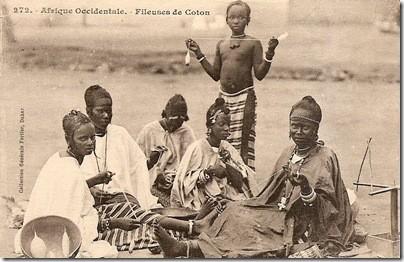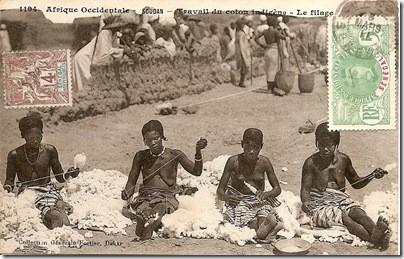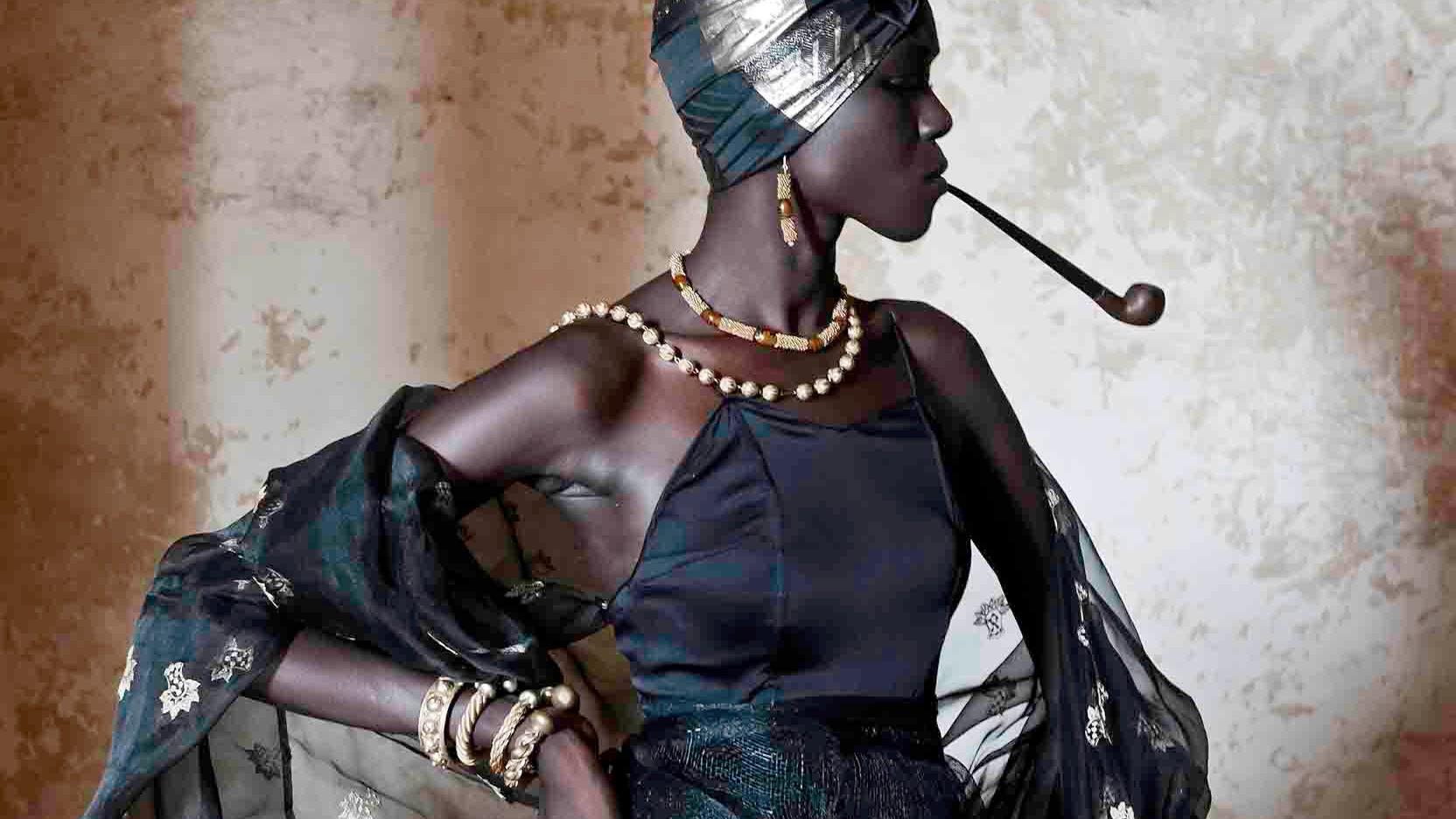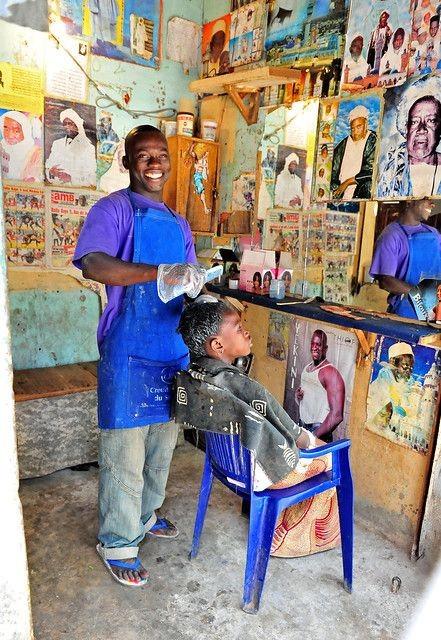
3 minute read
Painting by Alioune Diagne shows a hairdresser working on the street.
from Making a City
This image captures the sense of intimate community in the spaces where infroal economies such as hairdressing occurs. It also speaks of the working conditions faced by the labourers.
Edmond Fortier and textile production in West Africa, 1900-1910
Advertisement
These photographs taken in the early 20th century depict the prevalence of informal, creative economies in society them. The photos, taken across West Africa, capture the daily lives of cloth makers and dyers, and show certain aspects of the industry, whilst hiding others. These thought-provoking images also show the typical gender imbalance in the sectors..

Subheading: Examples of the crafts
The importance of encompassing a multitude of industries under the versatile term 'craftwork' cannot be overstated, as it serves to acknowledge and venerate the diversity of creative practices that abound within a society. The employment of this allencompassing terminology affords a panoramic view of a wide spectrum of creative endeavours, woodworking, and jewellery making, among others, thereby underlining both the commonalities and acknowledgement of diversity is indispensable in propagating the cultural identity of a society and underscoring the opulence of its creative heritage.
Moreover, the term 'craftwork' engenders the development of a shared idiom and comprehension facilitates the cultivation of collaborations, exchange of knowledge and ideas, and concerted endeavours towards shared objectives. The versatility of the term also allows for the promotion of inter-industry undertakings, such as the advocacy of sustainable practices or the formation of shared spaces for
Weavers and Textiles
The multifaceted history of weaving and textiles in Senegal is a tapestry of cultural syncretism, artistic ingenuity, and economic progress. The roots of this vibrant industry can be traced back to the early days of the trans-Saharan trade routes, when textiles and other goods were exchanged between West Africa and the Arab world. Over time, these interactions gave rise to the rich cultures of weaving and textile production that have continued to flourish in Senegal and beyond.
In the modern era, Senegal's textile industry has undergone significant changes and challenges, driven in part by the forces of globalization, urbanization, and changing consumer preferences. Despite these challenges textile production remains a vital part of the country's cultural heritage and economic landscape, providing livelihoods for many artisans and workers and contributing to the country's development. There has recently been a growing recognition of the importance of the textile industry to Senegal's cultural and economic identity, leading to efforts to support the industry. These efforts have included initiatives to revitalise traditional techniques, foster innovation, collaboration and creativity, and connect local artisans with new markets and consumers. There is also a growing interest in the potential of textiles to contribute to sustainable development and social change, through initiatives such as fair, local trade, eco-friendly production, and the empowerment of women and marginalized communities.
Jewellers and Goldsmiths
From the early days of the trans-Saharan trade routes, when gold, silver, and other precious metals were exchanged between West Africa and the Arab world, to the present day, jewelry making has been a vital part of Senegal's cultural heritage and economy. Over time, Senegal's jewelry making traditions have evolved and adapted to changing styles and tastes, incorporating new materials, techniques, and designs.
Today, the country's jewelry makers continue to create stunning pieces that reflect the diversity and richness of Senegalese culture and materials, drawing on a wide range of influences, from traditional motifs and symbols to contemporary trends and global fashion. Despite the challenges posed by globalization, Senegal's jewellery makers have remained resilient, finding new ways to innovate and adapt. This has included embracing new technologies and materials, such as 3D printing and recycled metals, as well as exploring new distribution channels, such as e-commerce and social media.

Shoemakers
Senegal has a long history of shoemaking known for its intricate designs, high-quality materials, and traditional techniques. Shoemakers in the past used locally sourced materials like leather from livestock and hides, dyed with natural pigments from plants. Despite facing challenges such as competition from cheap imports and decline in demand for traditional footwear, shoemakers continue to use both traditional and modern methods to create unique designs.
Street Hairdressers
From the start of colonialism, when African hairdressing traditions were suppressed and derided by European authorities, street hairdressing has been a vital part of Senegal's cultural heritage. Senegal’s hairdressing traditions have adapted to changing styles and trends, incorporating new techniques, tools, and products.

Today, the country's street hairdressers continue to create stunning hairstyles that reflect the diversity and richness of Senegalese culture, drawing on a wide range of influences, from traditional styles and patterns to contemporary fashion and global popular culture.
Despite the challenges posed by poverty, lack of resources, and limited access to formal training, Senegal's street hairdressers have remained resilient and resourceful, finding new ways to innovate and adapt. This has included developing their own unique styles and methods, using improvised tools and materials, and establishing networks and associations to support and promote their work.





